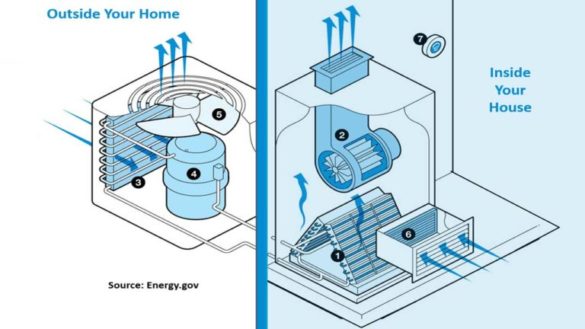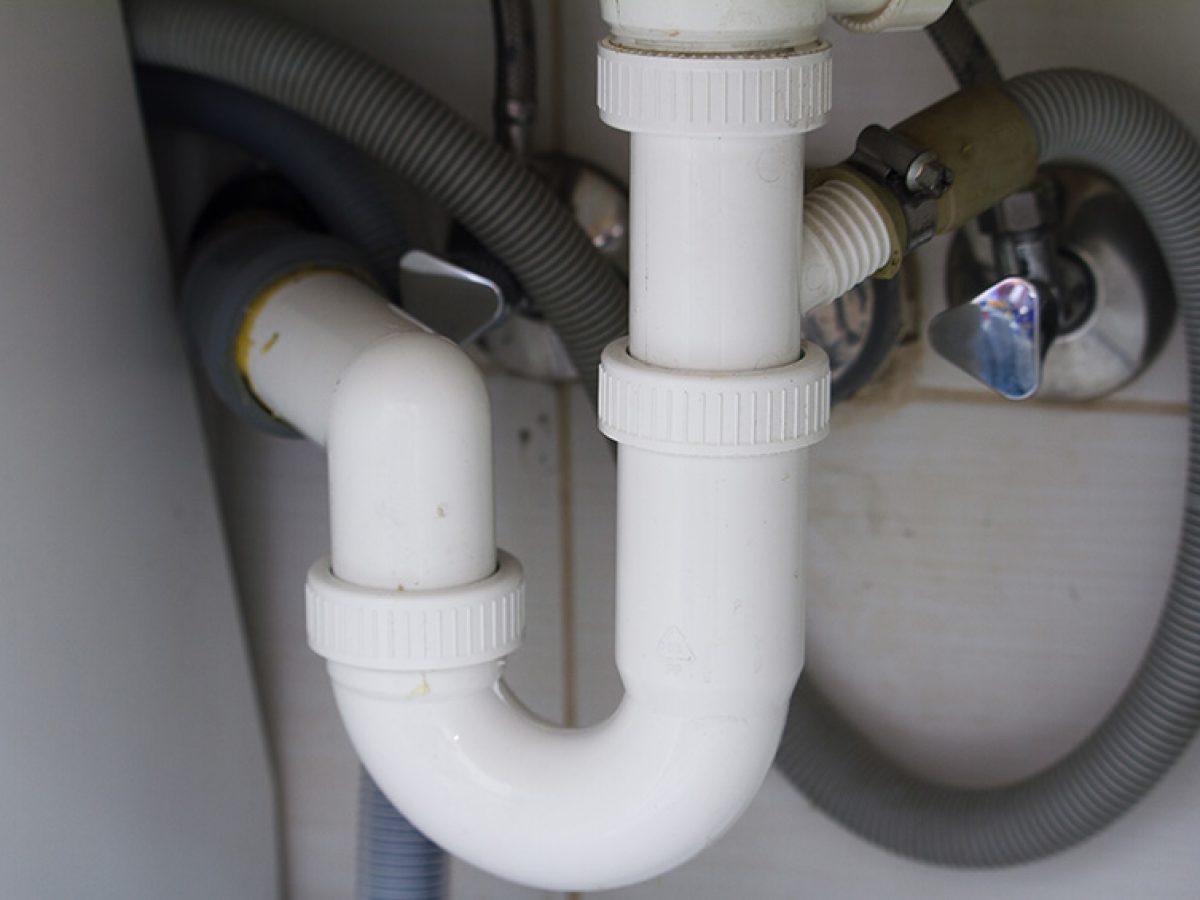An In-Depth Look at Your Home's Plumbing System Anatomy
An In-Depth Look at Your Home's Plumbing System Anatomy
Blog Article
Everybody may have their personal rationale on the subject of The Inner Workings of Your Home's Plumbing.

Recognizing how your home's plumbing system functions is essential for every property owner. From supplying clean water for drinking, food preparation, and bathing to safely getting rid of wastewater, a well-maintained plumbing system is essential for your family members's health and comfort. In this extensive guide, we'll explore the complex network that composes your home's pipes and deal pointers on upkeep, upgrades, and handling common problems.
Introduction
Your home's plumbing system is more than simply a network of pipelines; it's a complex system that guarantees you have access to tidy water and reliable wastewater removal. Knowing its components and exactly how they collaborate can assist you stop pricey repairs and guarantee everything runs efficiently.
Standard Components of a Pipes System
Pipelines and Tubes
At the heart of your pipes system are the pipelines and tubing that carry water throughout your home. These can be made of different products such as copper, PVC, or PEX, each with its benefits in regards to longevity and cost-effectiveness.
Fixtures: Sinks, Toilets, Showers, etc.
Components like sinks, toilets, showers, and tubs are where water is utilized in your home. Comprehending exactly how these fixtures link to the pipes system helps in identifying issues and intending upgrades.
Shutoffs and Shut-off Factors
Valves manage the circulation of water in your plumbing system. Shut-off valves are critical during emergencies or when you need to make repair services, permitting you to separate parts of the system without interfering with water circulation to the whole residence.
Water System System
Key Water Line
The primary water line links your home to the metropolitan water or a personal well. It's where water enters your home and is dispersed to various components.
Water Meter and Pressure Regulatory Authority
The water meter actions your water use, while a pressure regulator makes certain that water moves at a secure pressure throughout your home's plumbing system, protecting against damages to pipes and fixtures.
Cold Water vs. Hot Water Lines
Recognizing the difference in between cold water lines, which provide water straight from the main, and warm water lines, which lug heated water from the water heater, assists in troubleshooting and planning for upgrades.
Drainage System
Drain Pipes Water Lines and Traps
Drain pipes carry wastewater away from sinks, showers, and toilets to the sewer or septic tank. Catches stop drain gases from entering your home and likewise trap particles that can create blockages.
Ventilation Pipes
Ventilation pipes permit air right into the drain system, avoiding suction that could reduce drain and trigger traps to vacant. Appropriate ventilation is important for maintaining the integrity of your pipes system.
Significance of Proper Water Drainage
Making certain appropriate water drainage stops backups and water damages. Consistently cleaning up drains pipes and preserving traps can avoid expensive repair work and expand the life of your pipes system.
Water Heating Unit
Types of Water Heaters
Water heaters can be tankless or traditional tank-style. Tankless heating systems warmth water as needed, while tanks store heated water for prompt usage.
Upgrading Your Plumbing System
Reasons for Updating
Upgrading to water-efficient components or replacing old pipes can improve water quality, reduce water costs, and boost the worth of your home.
Modern Plumbing Technologies and Their Benefits
Check out modern technologies like smart leakage detectors, water-saving toilets, and energy-efficient hot water heater that can save cash and lower environmental effect.
Cost Factors To Consider and ROI
Compute the upfront prices versus long-term financial savings when thinking about pipes upgrades. Numerous upgrades spend for themselves with reduced utility bills and less repairs.
Exactly How Water Heaters Connect to the Pipes System
Comprehending how hot water heater link to both the cold water supply and hot water distribution lines aids in identifying issues like inadequate hot water or leakages.
Maintenance Tips for Water Heaters
Consistently purging your water heater to get rid of sediment, examining the temperature settings, and examining for leakages can prolong its life-span and improve energy effectiveness.
Typical Pipes Problems
Leakages and Their Causes
Leaks can take place because of maturing pipelines, loose fittings, or high water pressure. Resolving leaks without delay stops water damage and mold development.
Blockages and Clogs
Blockages in drains pipes and commodes are usually triggered by flushing non-flushable products or a build-up of oil and hair. Using drain displays and bearing in mind what goes down your drains can prevent clogs.
Indications of Pipes Troubles to Expect
Low tide stress, slow-moving drains pipes, foul odors, or unusually high water bills are indications of prospective pipes issues that must be resolved immediately.
Plumbing Upkeep Tips
Regular Inspections and Checks
Arrange annual pipes inspections to catch issues early. Search for indications of leaks, corrosion, or mineral accumulation in faucets and showerheads.
DIY Maintenance Tasks
Simple jobs like cleaning tap aerators, checking for bathroom leakages utilizing dye tablets, or protecting revealed pipelines in cool environments can protect against significant pipes concerns.
When to Call a Specialist Plumbing
Know when a plumbing issue requires professional competence. Attempting complex repairs without proper knowledge can lead to even more damage and higher fixing expenses.
Tips for Reducing Water Use
Basic behaviors like repairing leakages promptly, taking much shorter showers, and running complete loads of laundry and dishes can preserve water and reduced your energy bills.
Eco-Friendly Plumbing Options
Consider lasting plumbing products like bamboo for flooring, which is durable and green, or recycled glass for counter tops.
Emergency situation Preparedness
Actions to Take Throughout a Pipes Emergency
Know where your shut-off valves are located and just how to shut off the water in case of a burst pipeline or significant leakage.
Significance of Having Emergency Situation Contacts Helpful
Maintain get in touch with details for local plumbing professionals or emergency solutions readily offered for quick action throughout a pipes situation.
Environmental Effect and Preservation
Water-Saving Fixtures and Appliances
Setting up low-flow taps, showerheads, and toilets can considerably lower water usage without compromising efficiency.
DIY Emergency Fixes (When Relevant).
Short-term repairs like making use of air duct tape to spot a dripping pipe or placing a bucket under a leaking faucet can lessen damages till a specialist plumber gets here.
Verdict.
Recognizing the makeup of your home's pipes system encourages you to keep it effectively, saving time and money on repairs. By adhering to normal upkeep regimens and remaining educated concerning modern-day pipes modern technologies, you can guarantee your pipes system runs effectively for many years ahead.
HOW YOUR PLUMBING SYSTEM WORKS
Which Pipes Do What?
Blue lines = fresh water supply entering the building Red lines = hot water supply entering the building Grey lines = pipes carrying waste away from the building and venting pipes carrying gases away from the building (through the roof) YOUR MAIN PLUMBING SYSTEMS
There are two main plumbing systems that support your home s basic plumbing needs one that brings clean water into your home, and one that sends dirty water away from your home. Connected to the toilet, bath, shower, and other faucets in your home, these two systems keep your water flowing in the right directions.
ACCESSING FRESH WATER
Fresh and clean water is brought into your home through the main water supply line . Filtered through one pipe, this water is pressured to flow into the various fixtures in your home at any given time.
This water can be sourced from a well located on your property, a pond or river (mostly cottages), or, as in most cases, from the city s municipal water treatment centre. However, it is important to note that water that is untreated, such as the water siphoned from ponds or rivers, may not be safe to drink. Personal water supplies always need to be treated for hardness and contaminants before consumed.
MUNICIPAL WATER SUPPLIES
Improve taste and odour Remove sediment Eliminate hardness Reduce chlorine COLD WATER SUPPLY VS. HOT WATER SUPPLY
Cold water flows into your home or building through the service line, which then distributes hot or cold water to your fixtures. This line is most commonly run through a central column that runs floor to floor. Hot water runs in short and straight pipes as the longer the pipeline, the more heat that will be lost in the transfer. Having shorter pipes also allows residents to access hot water more quickly.
WASTE WATER SYSTEM
Your wastewater system is divided into two parts pipes that send wastewater away from your home and venting pipes that send sewer gas away from your home. Sewage water travels through pipes that flush the water and waste towards local sewers that are operated and managed by your city or town. Most sewer systems rely on gravity to move the wastewater to where it needs to go.
The further away from your toilet or sink, the larger wastewater pipes become. This allows for waste to be disposed of from various parts of your home or business at once without pipe blockages. The angle and flow of these pipes are also essential for keeping your waste pipes clear of build up.
https://harrisplumbing.ca/how-your-home-plumbing-system-works/

Do you enjoy reading up on The Inner Workings of Your Home's Plumbing? Create a short review further down. We'd be delighted to know your views about this content. Hoping that you visit us again before long. Be sure to pause to distribute this page if you liked it. Thanks a lot for your time. Kindly come by our website back soon.
Click Here Report this page